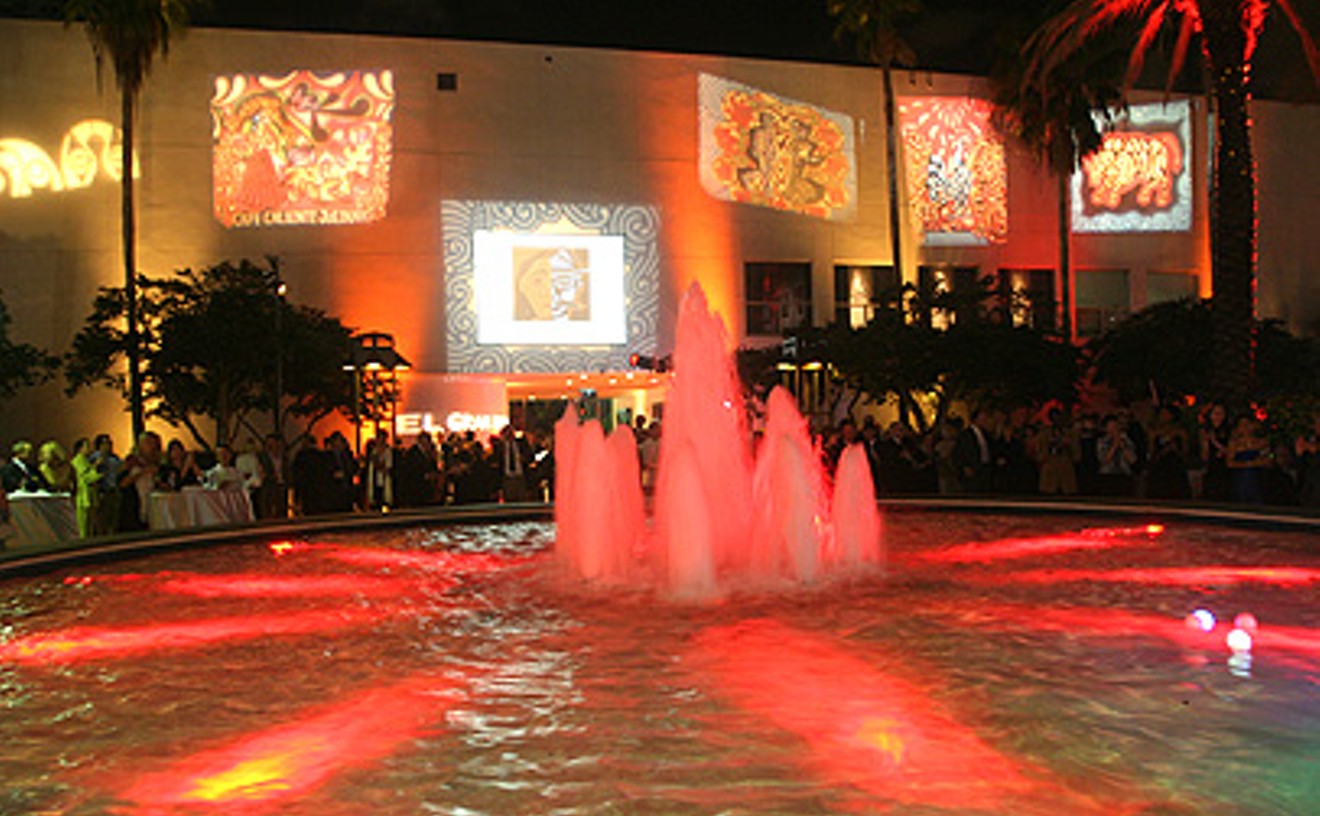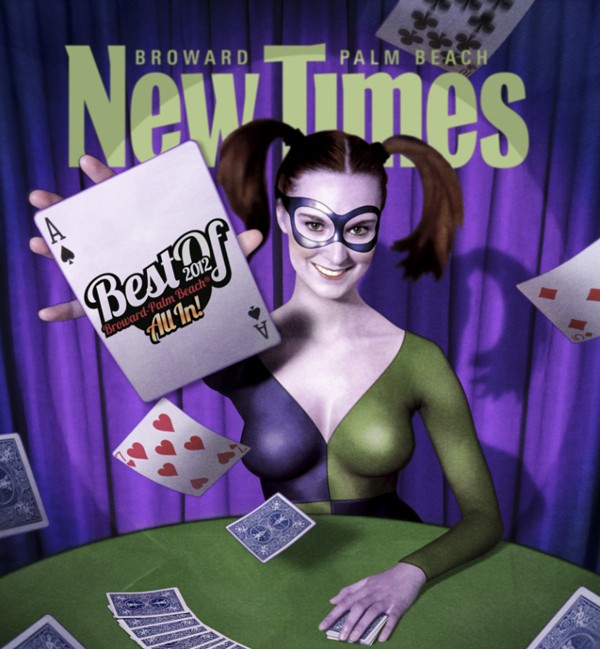Throw out everything you knew about pub quizzes and bands of cardiganed hipsters competing rabidly to nail a question on a technicality. In fact, don't call this light-beer-fueled questionfest a "pub quiz" at all. It's Trivia Night, plain and simple, and it goes down every Wednesday at 8 p.m. Your down-to-earth and occasionally lewd hosts, Dawn and Ken, holler out questions between loud plays of all the crappy songs you love. Be warned, though, that when the stakes get high, she'll trick you: "Uganda... is not the correct answer!" As for the bar, it's smoker-friendly (so bring your disgusting friends along), and the burgers and wings are decent. It's a sports bar owned by Packers fans, and it's full of TVs, so you just might decide to stick around to watch a game (or, as happened this year, one of the Trivia Night regulars competing on Jeopardy).
Best Male Strip Joint
Boardwalk

Whether you're into Mr. Universe types or prefer cherub-faced boys who look like they ought to be at home studying for an algebra test, a trip to Boardwalk on the right night will have you tingling below the belt. Show up on Wednesday for the "new meat amateur" contest or on Friday and Saturday for "packed porn star weekends," hosted by the delightfully entertaining Tiffany Arieagus and Misty Eyes. Boardwalk welcomes special visits from famously hung fellows like the Broke Straight Boys and boasts resident studs as well, like 21-year-old Cuban twins Arielle and George. One night with the oiled-up studs at Boardwalk and you're likely to realize that it would take a long (ahem), hard search to find a better spot to stuff bulging banana hammocks with stiff dollar bills.
- 1721 N. Andrews Ave., Lauderdale Lakes, 33311 Map
- 954-463-6969
- www.boardwalkbarxxx.com
Best B-List Celebrity
Vanilla Ice
For more than two decades, Rob Van Winkle has been the butt of jokes and the subject of parody. But the man responsible for the 1991 Grammy-nominated "Ice Ice Baby" has surged back to relevancy in recent years by branding himself as a fun-loving, dirt-bike-jumping, bong-ripping renegade of home renovation. When his music career hit a lull, he stacked cash by buying homes on the cheap, fancying them up, and then flipping them. That eventually became the premise of his award-winning reality show, The Vanilla Ice Project, which the DIY Network renewed earlier this year for a third season. B-list success begets B-list success. In recent months, he has been a judge on Canada Sings, worked his way into a feud between WWE's the Rock and John Cena, performed at halftime of a Minnesota Timberwolves game, and gone back to the studio — albeit with Psychopathic Records and the Insane Clown Posse. He's living the American juggalo dream.
Best Art Museum
Norton Museum of Art

Visiting the 122,500-square-foot Norton is like shopping at an enormous department store: The most pressing question is where to stop off first. The permanent collection alone, which comes to more than 7,000 works of art, includes five sections — American, Chinese, contemporary, and European art, along with photography — any one of which could occupy you for an hour or two. Then there are the special exhibitions, which are like big "for a limited time only" sales. A recent lineup featured seven running simultaneously: two photography exhibits, two showcasing glass art, one drawn from the Chinese collection, another with two big-name painters (Clyfford Still and Joan Mitchell), and one held-over extravaganza documenting America's cocktail culture. It was a typical roster. This past year, the museum's 70th, saw a string of winners, from the four artists who made up the trippy "Altered States" to the massive oil paintings of Jenny Saville to the gimmicky but gratifying "A to Z: 26 Great Photographs From the Norton Collection." And if the aesthetic equivalent of power shopping wears you down, you can always stop off for lunch at the café or take in the gift shop. Cash or credit?
- 1451 S. Olive Ave., West Palm Beach, 33401 Map
- 561-832-5196
- www.norton.org
Best Art Gallery
Girls' Club Collection

For anyone who finds an art gallery espousing "Contemporary Art by Women" a quaint, anachronistic throwback to the early days of feminism, it's worth remembering that one of the most surprising developments in the current political climate is a debate over contraception for women. In other words, women's issues still matter mightily. Not that Girls' Club features art by and about women exclusively, even though a recent show, "Re-Framing the Feminine," focuses on work by women photographers. No, what sets the mostly privately funded Girls' Club apart from your average commercial gallery is an emphasis not on sales but on programming. A recent four-week workshop, for instance, brought together artists and writers of both genders to look at, discuss, and write about photography. Add to that lectures, film series, and audience-participation events, as well as participation in the Third Avenue Art District and FAT Village art walks, and you have a gallery fully engaged with the communities it serves. You go, Girls' Club.
- 117 NE Second St., Fort Lauderdale, 33301 Map
- 954-828-9151
- www.girlsclubcollection.org
Best Museum Curator
Jorge Hilker Santis

It's worth remembering, as Jorge Hilker Santis edges closer to retirement after 20-plus years at the Museum of Art|Fort Lauderdale, that often the people with the most impact are the ones who keep a low profile. As the museum's unassuming but rigorous curator and head of collection research, the Cuban-born Santis has maintained strong ties to his cultural heritage. He was the guiding force behind the museum's landmark Cuban shows, 1997's "Breaking Barriers" and 2008's "Unbroken Ties." His expertise has been critical to the institution's continuing accumulation of a world-class and heavily Cuban collection of Latin American art. The Cuban and Latin American connections are not surprising, but the versatile Santis also presides over the museum's formidable William Glackens Collection and Archives, which has its own wing and includes more than 500 works by the influential American artist and his contemporaries. Santis regularly raids that collection for in-house exhibitions that are invariably crowd pleasers. He'll leave large shoes to fill, along with a rich legacy.
- 1 E. Las Olas Blvd., Fort Lauderdale, 33301 Map
- 954-525-5500
- www.moaflnsu.org
Best Visual Artist
Bonnie Shapiro
Artists don't come much more quintessentially Floridian than Bonnie Shapiro. Born and raised in South Florida and educated at the University of Florida, Shapiro has lived here all her life. More to the point, her art is infused with a sense of what it's like to live in the Sunshine State. Her canvases often capture that dusky, indefinable moment when day transitions into evening, the twilit in-between time when hints of Old Florida creep into our consciousness. Her work leaves us with a vague yearning for something we can't quite pinpoint but we know is probably on the verge of disappearing. A trailer park at the edge of the Everglades, an old-fashioned diner nestled in a shopping center, a pull-off along some less-traveled back road — these are the things Shapiro typically trains her meticulous eye on. Yes, she regularly appears in all the right group shows around town (and frequently wins awards), and she's invariably there when a fellow artist needs a show of support or a word of encouragement. But it's her work itself that speaks so eloquently for her, and she's smart enough not to interrupt.
Best Art Event
Dr. Sketchy's Anti-Art School at Stage 84

For Brooklyn artists Molly Crabapple and A.V. Phibes, life drawing classes had become snoozeworthy: Sure, there was a naked model in the room, but said room was cold, fluorescent-lit, and filled with strangers. The experience would be so much better with friends. And alcohol. Thus, the two wizards birthed Dr. Sketchy's Anti-Art School — a cure for the common, drab, drawing-class environment. The alternative art craze swept the nation, finally landing itself a home in South Florida at Stage 84. Once a month, creative folk gather at the cozy hangout and feast their eyes on busty burlesque babes waiting to be sketched. The alcoholic drinks flow, cheering and shouting ensues, and five-foot-long balloons get swallowed by amazonian beauties. This anything-goes artistic atmosphere certainly draws a unique crowd and has no room for snobby folk just looking to place a red dot on an expensive painting.
- 9118 W. State Road 84, Plantation, 33324 Map
- 954-474-5040
- www.themackhouse.com
Best Body Painter
Keegan Hitchcock
It's a bird, it's a plane, it's a nude woman's body painted as Superman? For more than a decade, the whimsical Keegan Hitchcock has been beautifying the world, one brush stroke at a time. She's transformed humans into zombies, bare-breasted Mardi Gras-goers into ravenous tigers, and even a pregnant belly into an ocean-view sunset. However, it's not only birthday parties and nightlife events for Hitchcock: She's also part of a breast-cancer awareness project that's raising funds for the Kristy Lasch Miracle Foundation. Hand this girl a paintbrush and there is no telling what she will come up with.
Best Theater Space
Palm Beach Dramaworks
The move had been anticipated for well over a year, with news that Palm Beach Dramaworks would be relocating from its sardine-can space off Banyan Boulevard to the former Cuillo Theater, the empty landmark at the end of Clematis Street. It was funded in part by a $2 million grant from Palm Beach Gardens philanthropists Don and Ann Brown, and the vestiges of the Cuillo are mostly absent in the completely refurbished theater space, with everything from the auditorium chamber to the administrative offices and the costume shop undergoing a face-lift. The 218-seat black-box theater is the most impressive revision of all. Somehow, the intimacy that defined the old space is fully retained, while the room to play and build onstage has been enhanced beyond belief.
- 201 Clematis St., West Palm Beach, 33401-5512 Map
- 561-835-9226
- www.cuillocentre.com





